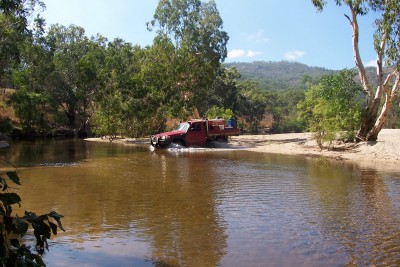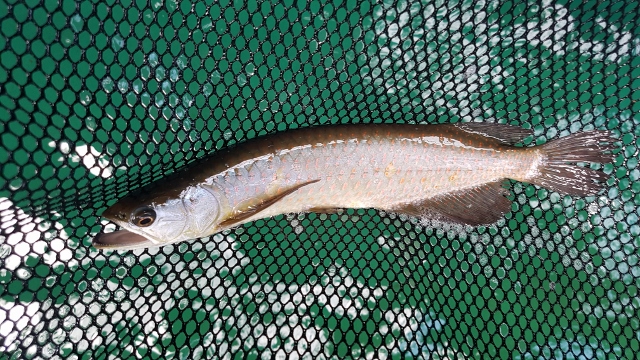Aussie Fish Aquatics produces a wide range of native fish, both for the aquarium market and for stocking, and grow-out purposes. Some of these include Australian Rainbows, Grunters, Catfishes, Gudgeons, Blue Eyes, Hardyheads (also knows as Australian Pencilfish, and Australian Glassfish).

Rainbows
One of the most popular of Australia’s native aquarium fish are the “Rainbows.”
Over the years techniques have been refined by Aussie Fish Aquatics that have made it possible to bulk spawn many of our native Rainbows. This has resulted in the cheap production of these beautiful fishes. Growing these fish in earth ponds allows them to reach a larger size faster than would be possible in alternative containers. Australia, New Guinea, and a few nearby islands are the only places in the world where these rainbow fishes are found naturally. There are many colour varieties of these fishes. Almost every stream or lake has a different colour variation of the rainbow. This natural variety of colours has attracted the interest of fish collectors around the world. Genuine true colour forms are usually sold under the name of the creek or river system of origin. Eg. Coen River Trifasciata. Ethical breeders will not cross breed colour forms. Ethical breeders will also know where their fish are from, which creek or river. The idea is not to breed unnatural colours, but only forms that occur in nature, in Australia and New Guinea
Lungfish
Another of Australia’s more unusual native fish is the Lungfish (Neoceratodus Forsteri). Aussie Fish Aquatics is one of only three commercial aquaculture sites in Australia with a permit to attempt to commercially produce these fascinating creatures. These fish are a CITES protected animal. This means that we will be permitted to sell the first generation within Australia, but will not be allowed to export the offspring until it can be established that we have successfully produced the second generation from the wild caught brood stock provided by the Queensland Department of Primary Industries.
The brood stock were provided under strictly controlled conditions to ensure that any offspring could be proven to be from the allocated brood stock, and not wild caught. Genetic material was taken as well as tagging the brood stock. An external spaghetti tag and an internal electronic chip was inserted. One of the conditions on the permit is that a small fin clip from each baby Lungfish be provided to the fisheries department before the animal can be offered for sale. Once this is done the baby fish can be offered for sale as the fin clip will allow the fisheries department to confirm that this baby was produced from the brood stock that was provided, and not illegally collected from the wild. So far no baby Lungfish have been offered for sale.

Perch and Grunters
Australia has a number of perch and grunter which are suitable as aquarium fish. One of the most popular is the rare coal grunter. This is an extremely hardy fish. The young fish have a gold and black checkered pattern. As the fish mature the checkered pattern becomes less defined. Once the fish reach full maturity the colour is flecked gold and black as can be seen in the pictures below. The fish is able to change colour quite rapidly, changing from a bright gold dominate colour, to a very dark, almost block colour.
Archer Fish
Another popular native aquarium fish is the freshwater Archer Fish, sometimes called the “rifle fish” because of its skill of shooting down insects with a jet of water from its mouth. In January 2007, Aussie Fish Aquatics successfully spawned the freshwater Australian Archer Fish.
In February 2007, for the first time in the world, Aussie Fish Aquatics spawned and hatched the first freshwater archer fish. Brood fish were collected in the dry season of 2004 and held in freshwater ponds. Brood fish were collected in freshwater, raised and conditioned in freshwater. All spawning and raising of larvae was done in pure freshwater. So far fish have been raised to 13 cm. This breakthrough comes after 3 years of on farm development research. Brood fish behaviour has been studied carefully by Alan Sambell, farm manager. Finally the time was right to give a spawning attempt a go. This resulted in the first successful spawn of this species in the world.
Coal Grunter
Coal Grunter are generally not considered to be a good community species?? This is not completely true.
Coal Grunter can definitely be kept in some community tanks, under some circumstances. It is important to choose the “community” carefully. Anything that can be swallowed, will be swallowed, so no neon tetras! Anything that can’t stand up for it self will be bullied, sometimes until they are eventually killed, so no slow moving sluggish fish such as goldfish! Anything that can be torn apart and eaten will be torn apart and eaten, so no guppies! It is also necessary to have appropriate aquascaping. In other words, a good environment to allow all the tank-mates somewhere to dive into if they are being chased. Coal Grunter, in their natural environment live in communities. They swim about snagy areas of the river in loose groups of about 3 or 4 fish, sometimes more. If a tasty morsel, perhaps a little shrimp, is spotted by one individual, it will move in for the attack. Once it has started to attack the shrimp the rest of the group will join in. The shrimp is quickly ripped into pieces which can be swallowed. Working together they are able to take on bigger prey.
Saratoga
Aussie Fish Aquatics produce the Saratoga from the Fitzroy/Dawson River System. The other form of Saratoga found in Australia are only found in the far northern regions. The Fitzroy/Dawson system is in central Queensland. This is the only place in the world this particularly rare form or Saratoga occur naturally. They have been successfully stocked extensively in South East Queensland.
Saratoga babies are available seasonally. It is possible to get Saratoga babies in December, but they are only about 5cm and are easily stressed. We prefer not to offer our Saratoga until January when they are about 8cm and much hardier. They grow very quickly in our ponds and soon reach an ideal size for a hardy interesting pet. Below are Saratoga babies at the typical size for January. Right is the size for Saratoga babies in mid to late February.
Saratoga of any size are difficult to keep together, or with other fish. We strongly recommend that Saratoga be kept in a tank of their own. It is possible to keep Saratoga with other fish under the right circumstances, however they may still turn against their tank mates without warning. We hold our Saratoga in large tanks in very shallow water. Just enough for them to swim but not jump. (YES, they will jump out of your tank if it is not covered.) We add a large amount of aquatic weed giving individuals plenty of hiding places. When this is not done, we have been able to hold Saratoga for some time, then without warning one individual will be picked on until it is eventually killed. The bullying will continue until only one fish is left alive. Using very shallow water with plenty of weed has solved this problem for us.
Scleropages Leichardti are also extremely sensitive to some chemicals. You should be very careful when using treatments on these fish, especially for treating parasites. Apart from this sensitivity, they are not particularly fussy about water quality. Hardness between 50-300 and PH 5.00 – 8.50, with temperature in the range of 17 – 30C. We recommend the following water parameters, PH 7.00-7.50, hardness 150, temperature 22-25C.
Large individual fish can be difficult to transport. They have protruding teeth which can puncture the bag during shipping. Another problem with the transporting of large Saratoga is when they arrive up-side-down. They have real problems righting themselves. Once placed in an aquarium most other fish will simply turn right side up, but Saratoga seem to become disorientated, and can’t get back the right way. It is as if their balance mechanism has been re-set to up-side-down. Extreme steps need to be taken immediately to save the fish. If left unassisted they will usually die after a number of hours, even days. The fish need to be held in the upright position for as long as it takes to correct the problem. This can take quite a few minutes, even hours.
Purple Spot Gudgeon
The Purple Spot Gudgeon is not fussy about temperature. Tank temperatures in the range of 15-30c are acceptable, with a preference between 23-28c. They will eat most aquarium food, but can’t be trusted with small fish that fit in their mouth, such as neon tetras. Otherwise, they are an ideal community fish, with a peaceful disposition. They are expert at jumping out of aquariums, particularly from the corners of tanks. Therefore it is advisable to close any openings that they may jump from. A small plastic bag stuffed into any gaps at the corners of a tank will reduce the risk of finding your purple spot on the floor in the morning.
 Request a Quote!
Request a Quote!








